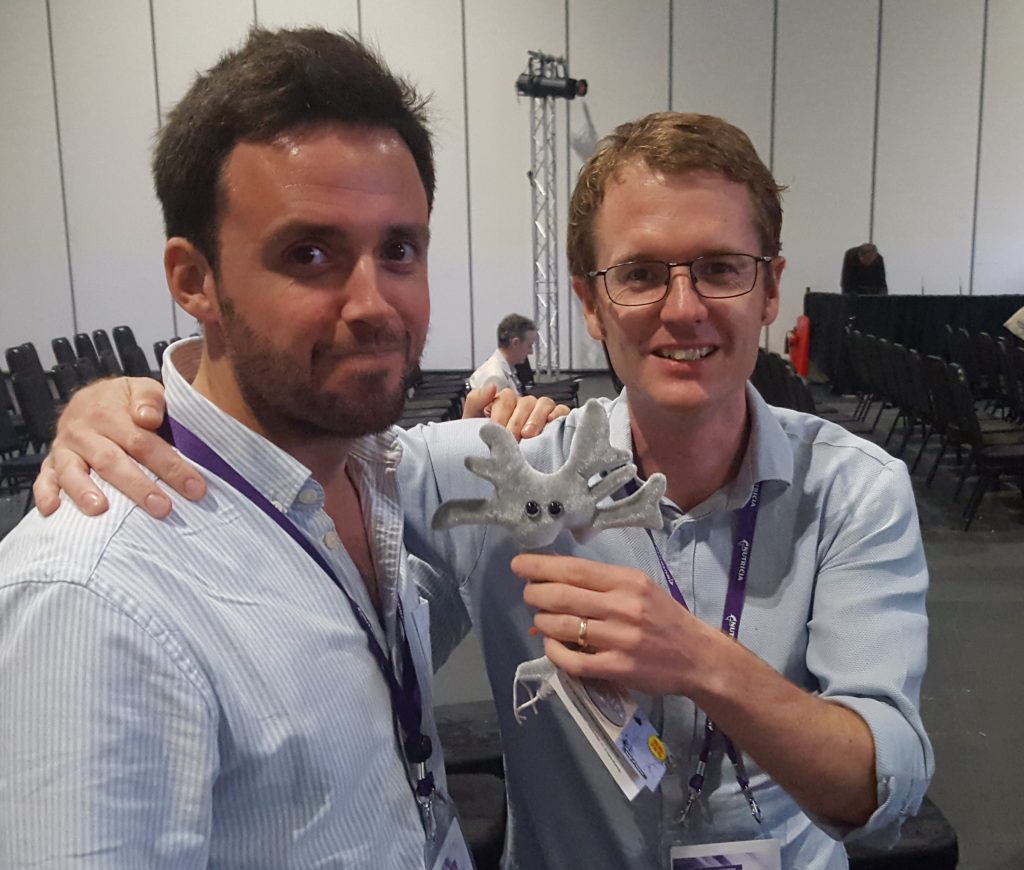I can’t let this blog go by without saying something about transport. This is not a criticism of the conference, but more about my choice to commute most days from Cambridge. To get to the 8am session, I left home at 5:30 on my trusty bike, cycled 6 miles to Cambridge station, hopped on the train to Kings Cross, then made the mistake of taking the central line tube which was delayed. Eventually I made it a few stops and then walked to catch the DLR at Tower Hill, from where I made to to the Excel Centre, only about 15 minutes late. Phew!
But it was worth the effort. The first session covered the hot topic of prion-like spread of proteins in neurodegeneration. Of course the session was dominated by “believers” presenting compelling evidence for tau, amyloid and alpha-synuclein transmission and templating. However, it also produced my favourite title so far from Jeff Kordower: “How I get my exercise – hopping on and off the bandwagon”. At the moment he is on it, demonstrating prion-like spread of alpha-synuclein, but only from the entorhinal cortex.

Arriving at the plenary session we were greated by the invitation to next year’s meeting in Chicago, including a great rendition of “Sweet Home Chicago” by a real live Chicago blues man. The talks included Julie Williams from Cardiff talking about newly published genetic risk factors for Alzheimer’s disease, published only yesterday in Nature. This was followed by the charismatic Simon Lovestone from Oxford who talked about the many ways that big data from electronic health records can be harnessed to derive biomarkers, repurpose existing drugs, and identify treatment cohorts. I was truly impressed by his ambition and the scale of the projects planned.
After lunch I joined the session on Frontotemporal Dementia, covering aspects of the tricky clinicopathological correlation of this set of disorders and moving towards mechanistic understandings of the various pathologies involved. Echoing the first session of the day, I learnt that TDP-43 can exhibit prion-like properties. We’ll have to wait and see whether this can be translated in to definitive treatments.
And finally, I joined the session on innovative approaches to imaging, which is near my own work. A few of the talks covered PET imaging of inflammation, in particular microglial activation. Su Li from Cambridge (conflict of interest warning, he’s from my own department!) presented a clever method of mathematical modelling to suggest that inflammation follows tau rather than the other way round.

My greatest success of the conference so far without a doubt was beating my colleague and (possibly former) friend Richard Bevan-Jones in the UK Dementia Research Institute’s brain model building competition – by one single second! The prize: a furry neuron.
I’m looking forward to day 4 of the conference tomorrow (with Mr Neuron!).
Tim Rittman – World Young Leaders in Dementia Steering Committee member




